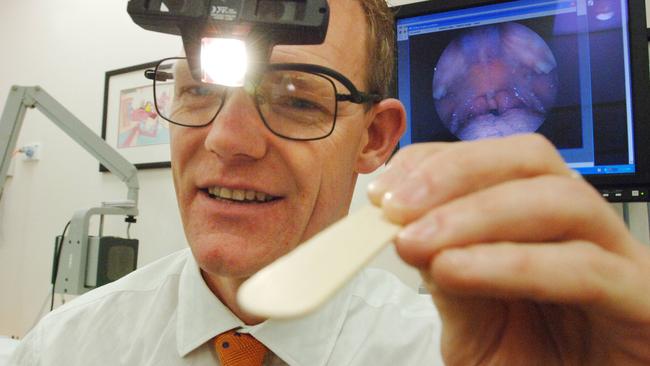Ten-year Flinders University study finds trimming gives better results than tonsillectomy
Parents need to be made aware that there are better options than tonsil removal say Flinders University researchers at the end of a 10-year study.

SA News
Don't miss out on the headlines from SA News. Followed categories will be added to My News.
Cutting tonsils down in size – rather than taking them out completely – speeds recovery in children, with less pain and bleeding, a 10-year Flinders University study has found.
Professor Simon Carney, who introduced the controversial tonsillotomy procedure to SA, said it had “great benefits”.
“It takes longer than a full tonsillectomy but our data has shown the benefits are just so great,” he said.
“We believe parents need to be aware of this option.”
Tonsillectomy, or the removal of the tonsils, is one of the most commonly performed ear, nose and throat surgical procedures.
More than 35,000 surgeries are performed a year in Australian patients aged 17 and under. The reason for the surgeries had shifted in recent years, Prof. Carney said.
“Recurrent tonsillitis is much less common than in the past,” he said. “By far, the most common reason for tonsil surgery is now obstruction, most commonly causing snoring and sleep issues as well as speech and eating problems in some cases.”
The study, published in the Australian and New Zealand Journal of Surgery, studied 608 children who had tonsil surgery with Prof. Carney between 2008 and 2018.
Those who had their tonsils reduced returned to normal activity, including diet and school or childcare, after about 4.6 days compared to 11.1 days after a full tonsillectomy. They were less likely to have bleeding or need to go back to hospital.
Study researcher and co-author Sara Attard said removing the tonsils exposed the muscles of the throat, causing pain and higher risks of bleeding.
“By removing 90 to 95 per cent of the tonsil and leaving a small crescent-moon of tissue intact, it leads to much less pain and bleeding,” she said.
“This allows kids to go back to childcare or school so much earlier, as well as reassuring parents there is much less risk of a tonsil haemorrhage.”
Prof. Carney said that while subtotal tonsil reduction was not recommended for multiple bouts of tonsillitis, leaving a little bit of the tonsil behind did not cause problems.
He said just 2.4 per cent of patients had any problems with the “bit left behind”.
In previous research, 80 per cent had no further infections.

